Dealing with a landlord dispute or eviction can be stressful—but understanding your rights under Texas law can make all the difference. When an eviction lawsuit is over and the landlord has won, it’s not truly finished until one final, powerful document comes into play: the writ of possession.
This isn't just another piece of paper. It's a direct order from the court, giving law enforcement the authority to remove a tenant and their belongings from a property. It’s the final step that officially returns control of the rental back to the owner.
The Final, Most Critical Stage of Eviction
Facing an eviction is one of the most stressful experiences anyone can go through. Whether you’re a landlord trying to reclaim your property or a tenant fighting to stay in your home, the whole process feels like a high-stakes battle.
The writ of possession is the final move on the board.
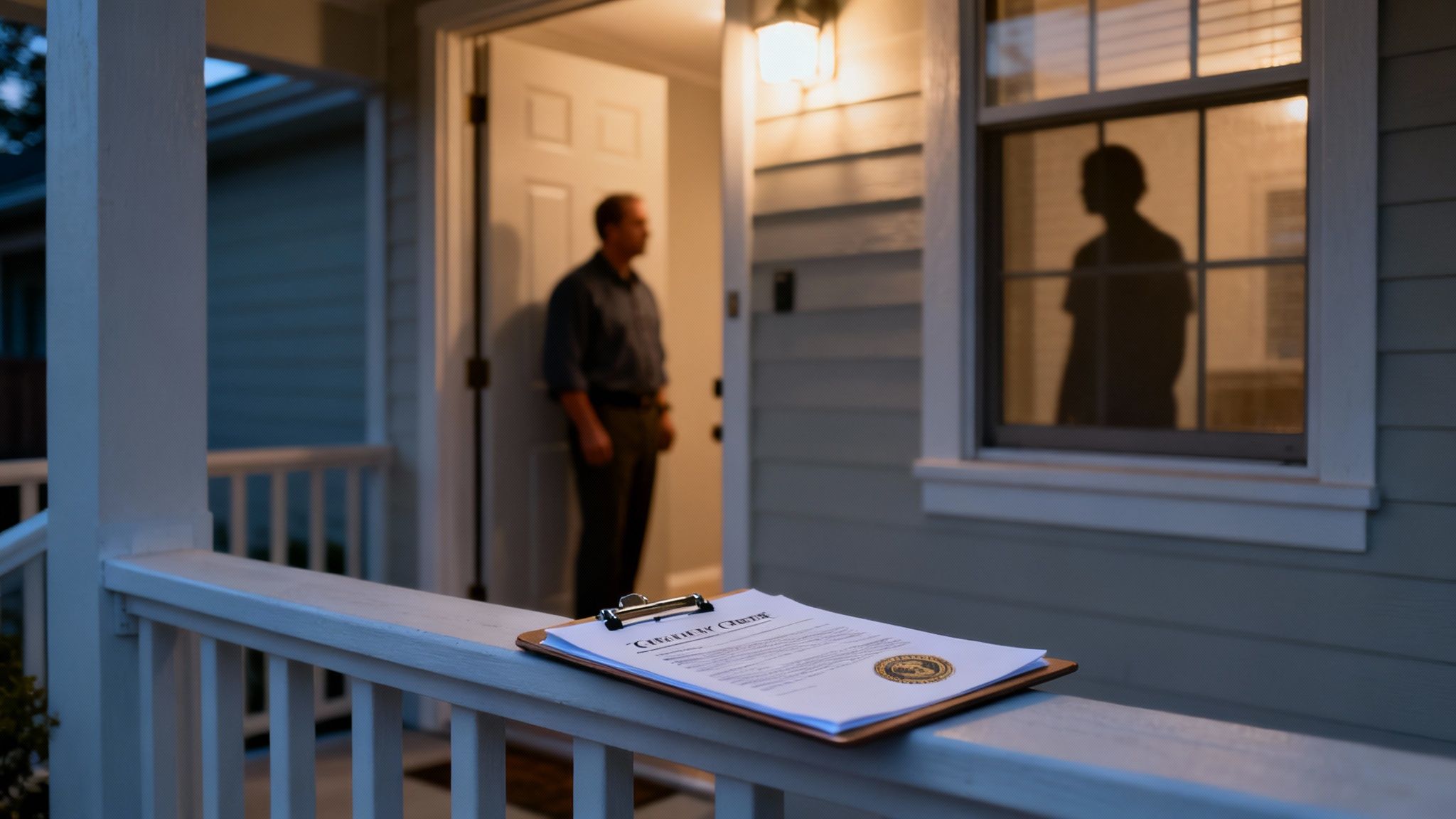
Think of it as the court’s last word on the matter—the instruction that sets the final, physical actions of the eviction in motion. Understanding what this document means and how it works is the first step to regaining control, no matter which side of the dispute you're on. This guide is here to cut through the legal jargon and give you a clear path forward during a difficult time.
What You'll Learn Here
We’re going to break down exactly what a writ of possession is under the Texas Property Code. More importantly, we'll explain the specific rights and duties both landlords and tenants have once this order is issued.
You'll walk away with a solid understanding of:
- The legal foundation for a writ of possession in Texas.
- The step-by-step process a landlord must follow to get one.
- How a constable or sheriff actually enforces the writ.
- What rights a tenant has after a writ is posted on their door.
The entire eviction process in Texas is a minefield of strict deadlines and procedures. One wrong move can cause huge delays for a landlord or completely undermine a tenant's rights. Our goal is to translate the legal-speak into practical, real-world information. By the time you're done reading, you’ll know what to expect and how to protect your interests, whether you're enforcing a court judgment or responding to one.
What Exactly Is a Writ of Possession?
So, you've won your eviction lawsuit in a Texas court. The judge sided with you, but the tenant is still there. Now what?
This is where the writ of possession comes in. Think of it as the final, official step that gives a landlord back their property. It’s not just a request—it’s a powerful court order issued after you’ve won the eviction case and the tenant has refused to leave within the time the judge gave them.
This document isn’t for you, the landlord. It’s a direct command from the court to a constable or sheriff. It gives them the legal authority to show up, physically remove the tenant and their belongings, and officially hand possession of the property back to you. It’s the tool that turns the judge's ruling into reality.
The idea behind a writ of possession has been around for centuries, with its origins deep in English common law. It evolved over time as a formal, civilized way to enforce property rights without resorting to strong-arm tactics. If you're curious about the deep legal history, you can find more on the historical development of legal writs on JSTOR.
The Final Whistle in an Eviction Lawsuit
Let’s put this in simpler terms. Imagine the eviction lawsuit is a football game. Both sides present their case to the judge, who acts as the referee. When the judge rules in your favor, it's like the final score is posted on the scoreboard.
But the game isn't truly over until that final whistle blows. The writ of possession is that final whistle. It signals that the match is officially done, the winner has been declared, and it's time for the losing team to clear the field. Without it, the judge’s decision is just words on paper, with no real power to get your property back.
A writ of possession is the legal tool that bridges the gap between a court's decision and the real-world action of a landlord reclaiming their property. It transforms a legal victory into a physical reality.
What the Texas Property Code Says
In Texas, this isn't some informal process. The power and procedure for a writ of possession come straight from the law books. Specifically, it's governed by Texas Property Code Section 24.0061.
This law lays out the entire playbook, including critical details like:
- When a landlord can legally request the writ (typically after the 5-day appeal window closes).
- The requirement for an officer to post a 24-hour warning notice on the tenant’s door.
- How law enforcement must oversee the removal of the tenant and their property.
This statute is incredibly important. It ensures the final step of an eviction is handled legally and safely, preventing landlords from taking matters into their own hands. Illegal "self-help" evictions—like changing the locks or shutting off the power—are a fast track to getting sued. The code provides a clear, state-approved process that protects everyone involved. If you're navigating this, an experienced eviction attorney can explain exactly how this part of the Property Code applies to your case.
To see how all the pieces fit together, the table below breaks down the key stages of a typical Texas eviction.
Key Stages of the Texas Eviction Process
Here’s a simplified look at the journey from a notice to the final enforcement, showing exactly where the writ of possession comes into play.
| Stage | What It Means for Landlords | What It Means for Tenants |
|---|---|---|
| Notice to Vacate | You must provide a formal written notice, giving the tenant a deadline to move out before you can file a lawsuit. | You receive a formal warning that an eviction lawsuit may be filed if you don't leave the property by the specified date. |
| Eviction Lawsuit | If the tenant doesn't leave, you file an eviction suit in the Justice of the Peace court to legally remove them. | You are served with a lawsuit and have the right to appear in court to present your side of the story and any defenses. |
| Court Judgment | The judge hears both sides and issues a ruling. If you win, you are granted a judgment for possession. | If the court rules against you, a judgment is issued. You typically have five days to either appeal the decision or move out. |
| Writ of Possession | If the tenant still refuses to leave after the judgment and appeal period, this court order authorizes law enforcement to physically remove them. | This is the final step. A constable will post a 24-hour notice on your door before returning to oversee your removal from the property. |
As you can see, the writ is the culmination of a careful legal process designed to be fair but firm. It’s the last resort for landlords when a tenant simply won't comply with a court's order.
How Landlords Obtain a Writ of Possession
You won the eviction suit. It feels like a huge victory, but if the tenant is still in your property, the battle isn't over. That court judgment is just paper until you can legally reclaim your space.
This is where the writ of possession comes in. It’s the final, crucial step that turns the judge’s ruling into action. The process is precise, and every deadline matters. One misstep can lead to frustrating—and expensive—delays.
It all starts the moment a Texas Justice of the Peace court rules in your favor. From there, you have a clear, step-by-step path to follow.
This infographic breaks down the three main stages you'll go through after winning in court to get the writ issued and your property back.

As you can see, patience is built right into the system. The mandatory waiting period isn't just a suggestion; it's a legal requirement before the court can give you that final order.
Step 1: Wait for the Appeal Period to Expire
Once the judge rules for you, you can't just run down to the clerk's office and demand the writ. Texas law is very clear: the tenant gets a five-day period to appeal the eviction judgment. This clock starts ticking the day after the judgment is signed.
This waiting game is a fundamental part of the tenant's due process rights. Trying to file for the writ during these five days is a common mistake that guarantees the court clerk will reject your request. You have to wait until day six.
Step 2: File the Application for the Writ
The five-day appeal window has closed, and the tenant hasn't filed an appeal. Now it's time to act. You can formally request the writ by filing an Application for Writ of Possession with the very same Justice of the Peace court that handled your eviction case.
This isn't just another form to fill out. Your application has to be perfect. It needs the correct case number, property address, and party names. Any little error could get your application kicked back by the clerk, forcing you to start over and costing you precious time.
Step 3: Pay the Required Court and Service Fees
When you submit the application, you'll also have to pay the fees. These costs aren't random; they cover two specific things:
- Court Filing Fee: This is for the clerk's time to process your application and prepare the official writ.
- Constable Service Fee: This fee pays the constable or sheriff to do their job—posting the 24-hour notice and then returning to oversee the removal of the tenant and their belongings.
The exact amounts can vary from one county to another, so it’s smart to call the court clerk beforehand and confirm what you owe. If you don't pay the correct fees, the process grinds to a halt until you do. Working with an experienced Texas landlord tenant lawyer can make sure all the paperwork and payments are handled right the first time.
Step 4: The Court Issues and Forwards the Writ
You've filed the application and paid your fees. Now, the court clerk takes over. They'll double-check everything to make sure the waiting period was honored and the paperwork is in order.
Once confirmed, the judge signs the writ, making it an official court order. But the clerk doesn't hand it to you. Instead, they send it directly to the constable or sheriff's office for the precinct where your property is located. At this point, it's out of your hands. The final removal is now the responsibility of law enforcement, ensuring everything is handled safely and by the book.
How the Writ of Possession Is Carried Out
Once the judge signs off on the writ of possession, things move from paperwork to direct action. This is where law enforcement takes over to enforce the court's decision, and it usually happens fast. For both landlords and tenants, knowing what’s coming is absolutely critical.
The job of executing the writ falls to the local constable or sheriff. They are legally required to see the judge's order through, making sure the property is handed back to the landlord without any trouble. It's important to remember that a landlord can't just go and perform a "self-help" eviction—the law requires an officer to oversee the process.

The 24-Hour Warning Notice
The first thing the constable will do is post a written warning on the front door of the property. This is the tenant's final, official heads-up.
The Texas Property Code is very specific here. The notice has to state that the writ has been issued and will be enforced soon. More importantly, it must give the exact date and time the officer will be back to physically remove the tenant. That time must be at least 24 hours after the notice is posted, giving the tenant one last, brief window to move out voluntarily.
The Day of Enforcement
When the date and time on the notice arrive, the constable or sheriff returns. Their main job is to keep the peace and make sure the transfer of possession happens legally. The landlord, or their representative, needs to be there to take back the keys and control of the property.
Here's how it typically unfolds:
- The officer will ask the tenant and anyone else inside to leave.
- If they refuse, the officer has the authority to use reasonable force to remove them.
- Once everyone is out, the landlord can legally change the locks and secure the property.
This is a crucial step. A landlord who changes the locks even a minute before the officer gives the okay could find themselves facing a wrongful eviction lawsuit.
What Happens to a Tenant's Belongings?
One of the biggest questions is always about the personal property left behind. The Texas Property Code provides a clear answer, specifically in Section 24.0061(d)(2).
The law allows the landlord to place the tenant's belongings outside the rental unit. But there’s a catch: the items have to be moved to a nearby spot that doesn't block a public sidewalk, street, or walkway. This is to keep public areas clear and safe.
Important Note on Weather: The law even accounts for bad weather. If it's raining, sleeting, or snowing, the landlord can't just dump the tenant's property outside. They must wait for the weather to clear up before moving anything.
Once the belongings are moved outside, the landlord's responsibility for them pretty much ends. The items are considered abandoned, and it’s up to the tenant to figure out how to collect them. This is exactly why that 24-hour notice period is so vital—it's the last chance to get your valuables out.
While these rules are specific to Texas, the concept of property repossession is a global one. For instance, data from the UK shows just how much economic shifts can impact evictions. In the first quarter of 2009, right after the financial crisis, court bailiffs carried out 9,284 repossessions. By 2018, that number had dropped to just 934. You can see more on these trends in the UK's official mortgage and landlord possession statistics.
Executing a writ of possession is the final, decisive move in the eviction process. It’s a formal procedure meant to enforce a court order while giving everyone clear, if brief, rules to follow. If you're a landlord or tenant in this situation, understanding these steps is the best way to protect your rights. An experienced eviction attorney can offer invaluable guidance during what is always a stressful time.
A Tenant's Rights After a Writ Is Issued
Seeing that 24-hour notice taped to your door is a gut-wrenching moment. It feels like the absolute end of the road, but it’s critical to know you still have rights—and a very small window to act. While the chance to fight the eviction itself has probably passed, understanding what you can still do will help you get through this with as much control as possible.
The 24-Hour Notice Window
That piece of paper from the constable is your final, official warning. This 24-hour period is your last opportunity to move out on your own terms before law enforcement comes back to physically remove you and your belongings. Your absolute top priority should be packing your most essential items and figuring out where you will stay.
Focus on what is impossible to replace:
- Important Documents: Think birth certificates, social security cards, passports, and your copy of the lease.
- Medications: Grab any prescriptions for yourself, your family members, or pets.
- Valuables: Any items with high sentimental or monetary value that you can easily carry.
- Essentials: Pack a few days of clothes, toiletries, and anything vital for kids or pets.
Retrieving Property Left Behind
So, what happens if you can't get everything out in time? It’s a common and stressful problem. Under the Texas Property Code, the landlord can move your remaining belongings outside—but only under the supervision of the constable. They are required to place your items in a nearby area that doesn't block a public sidewalk or street.
Once your property is moved outside, the landlord is no longer responsible for it. It's now vulnerable to theft or damage from weather, so you must arrange to pick it up as quickly as you possibly can.
This final stage can feel incredibly isolating, but it’s a process rooted in legal systems worldwide. In fact, global eviction trends often follow economic shifts. Data from several OECD countries revealed a general drop in physical evictions before 2020. Then, the COVID-19 pandemic brought widespread eviction moratoriums, which paused the enforcement of writs of possession across the globe and highlighted just how central they are to the physical removal process. You can read more about these global eviction trends on oecd.org.
Last-Resort Legal Options
Is there anything you can do legally at this late stage? The truth is, your options are extremely limited and hard to pull off. A tenant technically has five days from the original eviction judgment to file an appeal and post an appeal bond with the court.
But if a writ of possession has already been issued, it almost always means that five-day window has slammed shut. Stopping a writ once it’s in the constable’s hands is nearly impossible without an emergency order from a higher court, which requires immediate help from an experienced eviction attorney. For a deeper look at your protections under the law, you can learn more about the Texas Property Code and tenant rights in our detailed guide.
This is crunch time. Knowing what to prioritize and what the law says about your property can make a world of difference during an incredibly stressful and emotional ordeal.
Why You Need a Texas Landlord Tenant Lawyer
The Texas eviction process is a minefield of strict deadlines and procedural rules. One wrong step, one missed deadline, and the whole case can get thrown out.
For landlords, that means costly delays. For tenants, it could mean losing your home. This isn’t something you can afford to take lightly, and it's certainly not a DIY project.

Whether you're a property owner or a renter, going it alone in eviction court puts you at a huge disadvantage. The stakes are just too high to risk a misstep.
For Landlords Protecting Their Property
As a landlord, your goal is simple: reclaim your property legally and efficiently. An experienced eviction attorney makes sure every step—from the first notice to filing the final writ of possession—is handled by the book.
This is your best defense against having your case dismissed on a technicality, which saves you a ton of time, money, and frustration.
Having a lawyer in your corner isn't just about winning; it's about making the process airtight. It protects you from potential lawsuits and gets your property back on the market where it belongs.
For Tenants Defending Their Rights
Getting an eviction notice is incredibly stressful. A tenant rights lawyer can immediately spot procedural mistakes the landlord may have made, which can be enough to stop an eviction in its tracks.
Even if the process seems far along, an attorney can explain your options and defend your rights. They're also your shield against illegal landlord tactics. If you think your landlord is trying to force you out without a proper court order, you need to understand what is wrongful eviction and how to fight back.
Ultimately, legal help ensures the process is fair and that your rights under Texas law are fully protected.
If you need help with an eviction, lease issue, or rental dispute, contact The Law Office of Bryan Fagan, PLLC for a free consultation today.
Common Questions About Writs of Possession
The eviction process can feel like a maze, and when you get to the final step—the writ of possession—things can get confusing and stressful. Let's clear up some of the most urgent questions landlords and tenants have in Texas.
How Long Is a Writ of Possession Valid in Texas?
Once a Texas court issues a writ of possession, the clock starts ticking. The writ is generally valid for 60 days from the day it's issued. This gives the constable or sheriff a two-month window to carry out the order and remove the tenant.
But don't expect them to wait that long. In reality, most constables act within just a few days of getting the writ. If you're a landlord, that means you need to be ready to secure your property on short notice. If you're a tenant, it means the time to move is now.
Can a Landlord Force Me Out Without a Writ of Possession?
No. Absolutely not.
In Texas, it is illegal for a landlord to take matters into their own hands. This is what's known as a "self-help" eviction, and the law comes down hard on landlords who try it.
Without a court order, your landlord is strictly forbidden from:
- Changing the locks.
- Shutting off your water, electricity, or other essential utilities.
- Hauling your personal belongings out of the property.
- Using threats or physical force to make you leave.
Only a constable or sheriff with a valid writ of possession has the authority to physically remove a tenant from a property. Any landlord who tries to sidestep the legal process is opening themselves up to serious financial and legal trouble.
What Happens if I Am Not Home When the Constable Arrives?
If you aren't there when the constable comes to enforce the writ, the eviction moves forward anyway. The officer will supervise as your belongings are removed from the home.
Your things will typically be placed outside near the rental, usually in a spot that doesn't block a public sidewalk or street. From that moment on, your landlord has no responsibility for what happens to them. It’s critical to arrange to get your possessions as quickly as possible before they're damaged by the weather or stolen.
Can a Writ of Possession Be Stopped After It Is Issued?
Stopping a writ once it’s in the constable’s hands is incredibly difficult—and very rare. By this point, the legal fight is over. The judge has ruled, and the appeal window has likely closed.
The only slim chance is to get an emergency court order, like a temporary restraining order or a stay from a higher court. To even attempt this, you’d have to prove a major legal mistake was made during the eviction or that a serious injustice is about to happen. This is a high-stakes legal move that demands immediate help from an experienced Texas landlord tenant lawyer.
If you need help with an eviction, lease issue, or rental dispute, contact The Law Office of Bryan Fagan, PLLC for a free consultation today.

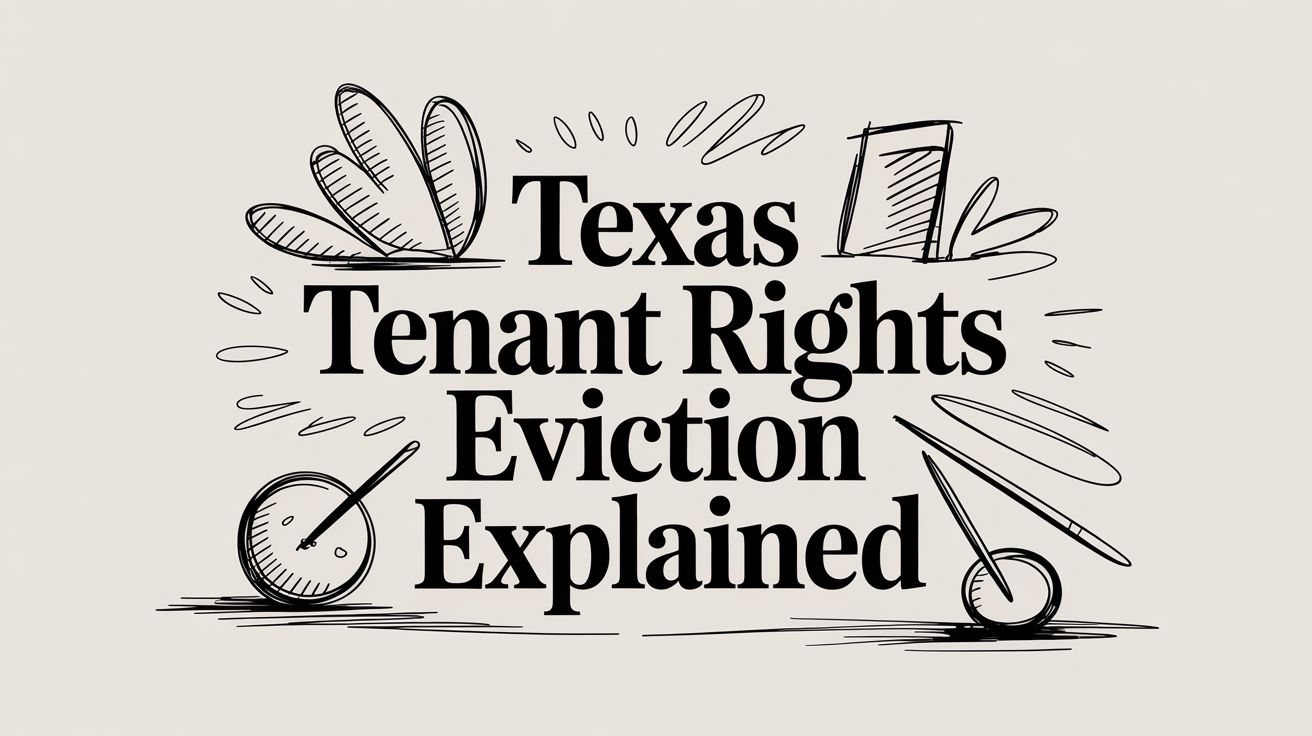
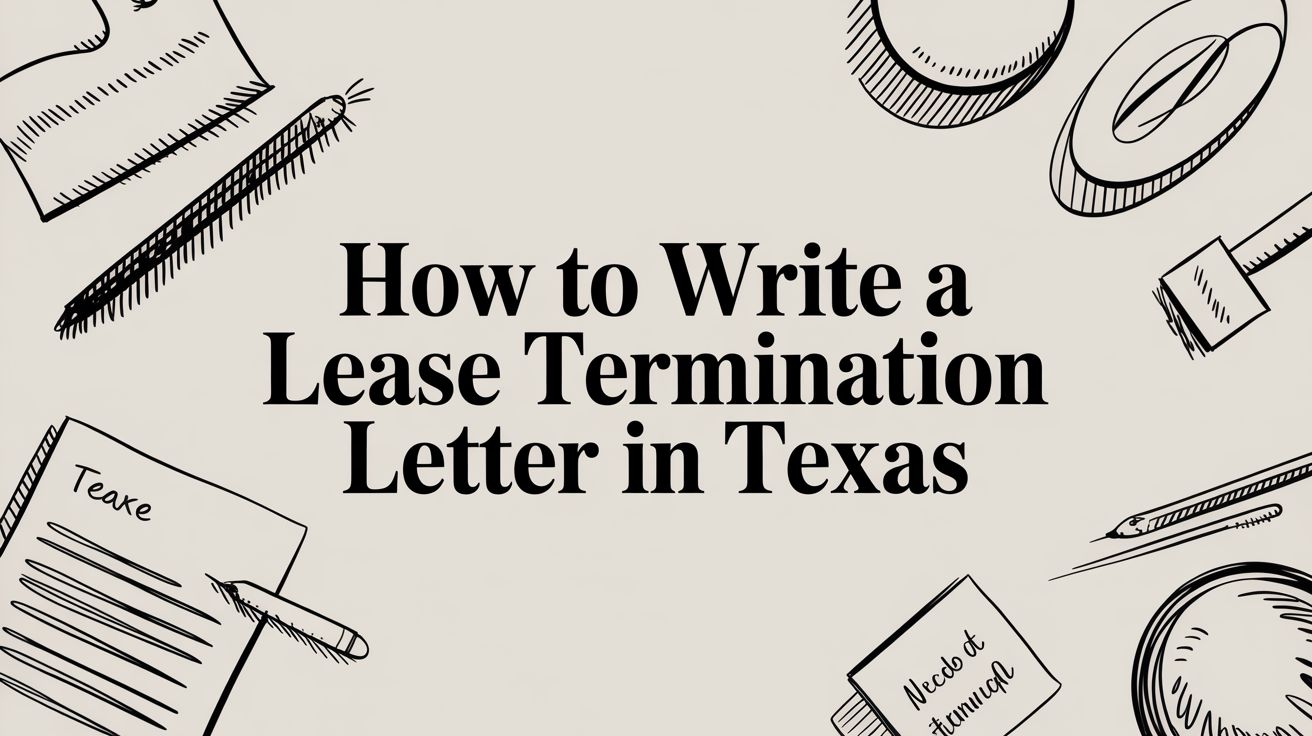

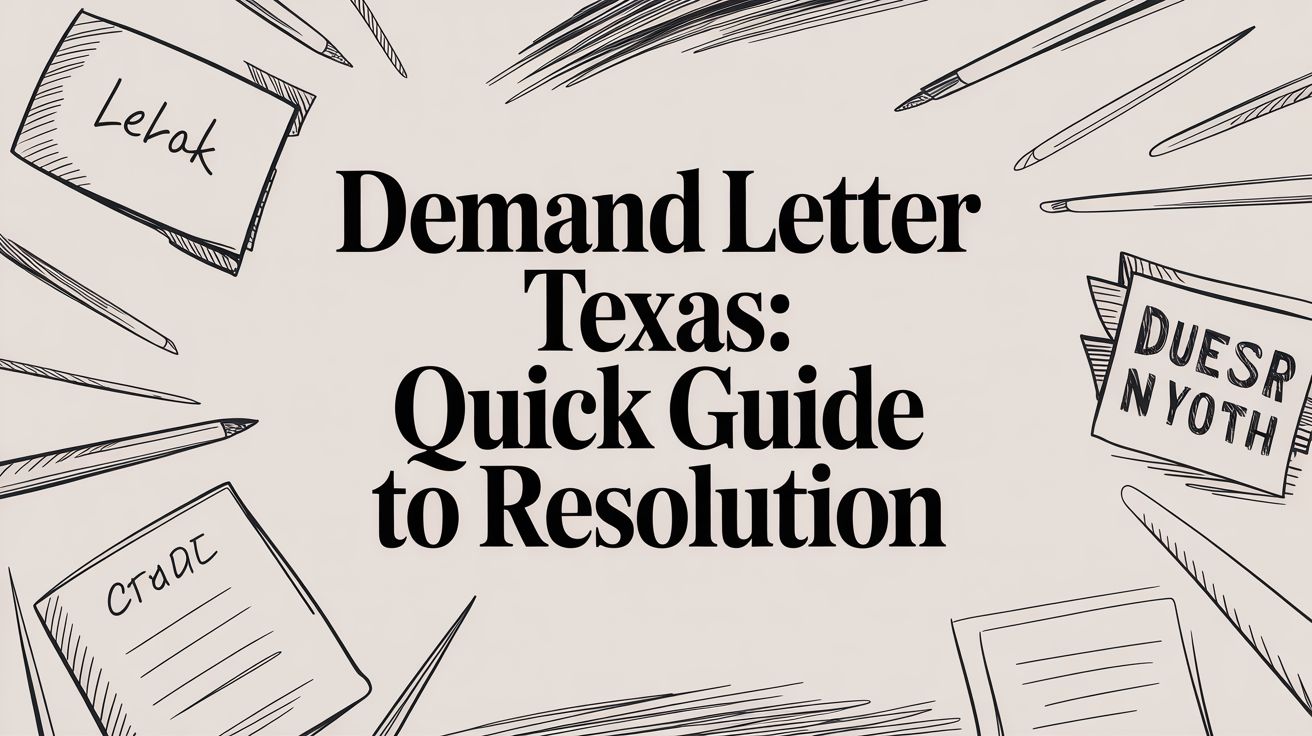
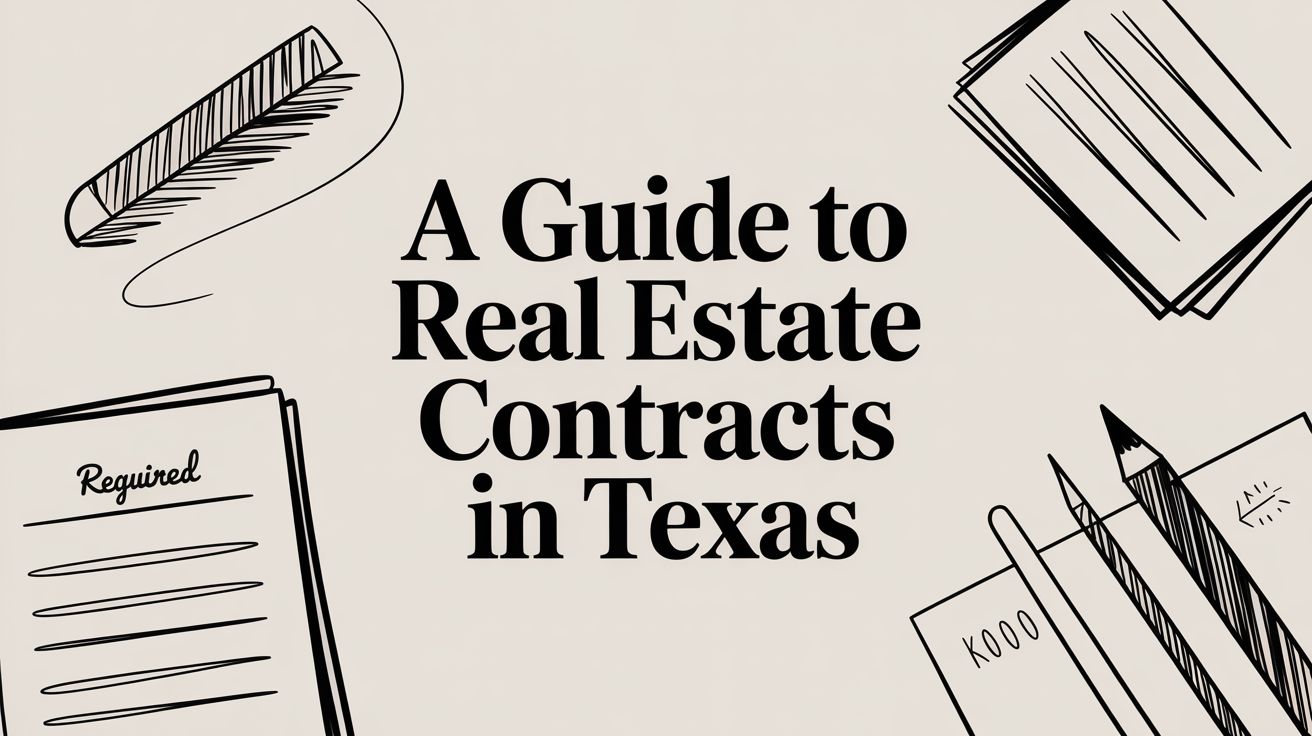
![Graphic design featuring the title "8 Valid Reasons to Break a Lease in Texas [2025 Guide]" with decorative elements like a pen and paper, emphasizing tenant rights and legal guidance in Texas.](https://texastenantlawyers.com/wp-content/uploads/2025/11/featured-image-7ebe2aec-eacb-4e61-8e85-9c298b07ad11.jpg)
